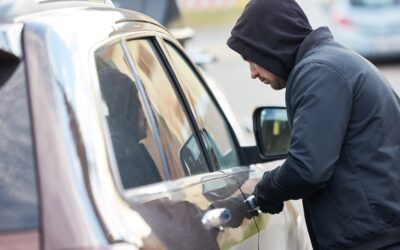When you’re learning to drive, you’ll have to familiarise yourself with loads of new terms and concepts. In this post, we’ll explain a couple of terms you might encounter in your driving lessons, on your driving test, and following an MOT: the offside and nearside of a car.
What is the Offside of a Car?
The offside of a car is the driver’s side. So this is the side of the car that will be closest to you when you’re driving.
The front half of a car’s offside is called the offside front.
The back half of a car’s offside is called the offside rear.
What is the Nearside of a Car?
The nearside of a car is the passenger’s side. So in the UK, where we drive on the left, the nearside is the side that’s nearest to the kerb.
The front half of a car’s nearside is called the nearside front.
The back half of a car’s nearside is called the nearside rear.
What is N/S/R or O/S/F?
The abbreviation N/S stands or nearside and O/S for offside and F or R stand for front and rear.
- The back half of a car’s nearside might be referred to as N/S/R and the offside as O/S/R.
- The front half of the car’s offside would be O/S/F and the nearside as N/S/F.
In some places, such as on a service or maintenance report or your MOT certificate, you might see that there’s a problem with your N/S/R tyre. This means you should look to servicing the tyre to the rear on the passenger’s side as soon as possible.
Where Are You Likely To See Offside and Nearside Used?
Your driving instructor might explain the difference between offside and nearside during one of your lessons. The terms might also pop up in your theory test, though you won’t have to answer any questions explaining the difference between nearside and offside.
Similarly, your examiner might use the terms during your practical test, but as explaining offside and nearside is not one of the show me, tell me questions, you don’t really need to know the difference to pass your test.
You’re most likely to see the terms offside and nearside written as the above abbreviations following an MOT, or a servicing. MOT certificates, servicing checklists, and garage invoices usually outline the work that’s necessary to keep your vehicle roadworthy. They use these terms to indicate where exactly the work is needed. These terms are often used to refer to tyres and brakes.
Further Car Maintenance Guidance for Learner Drivers and New Drivers
As we said above, you’ll have to get used to loads of new terms and concepts when you’re learning to drive. You’ll find plenty of guides on our site to help you understand various aspects of driving and car maintenance. Here’s a small selection:
- What is checked on an MOT?
- Is it illegal to drive without an MOT?
- How long does a car service take?
- How often should you service your car?
- A guide to tyre lifespans – how long they last, and how to make them last longer.
- Illegal tyres – examples of bald and unsafe tyres.
We offer affordable car insurance for learner drivers and new drivers. We’ll give you the cover you need at a competitive price. Get in touch for a free quote today.




